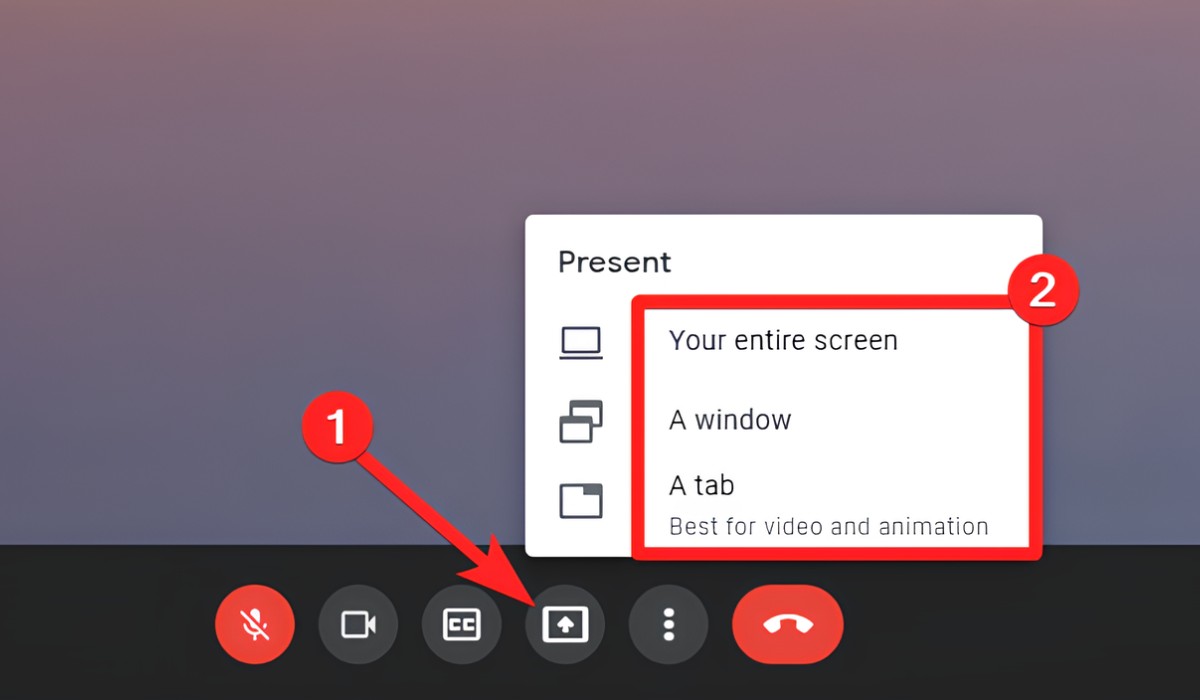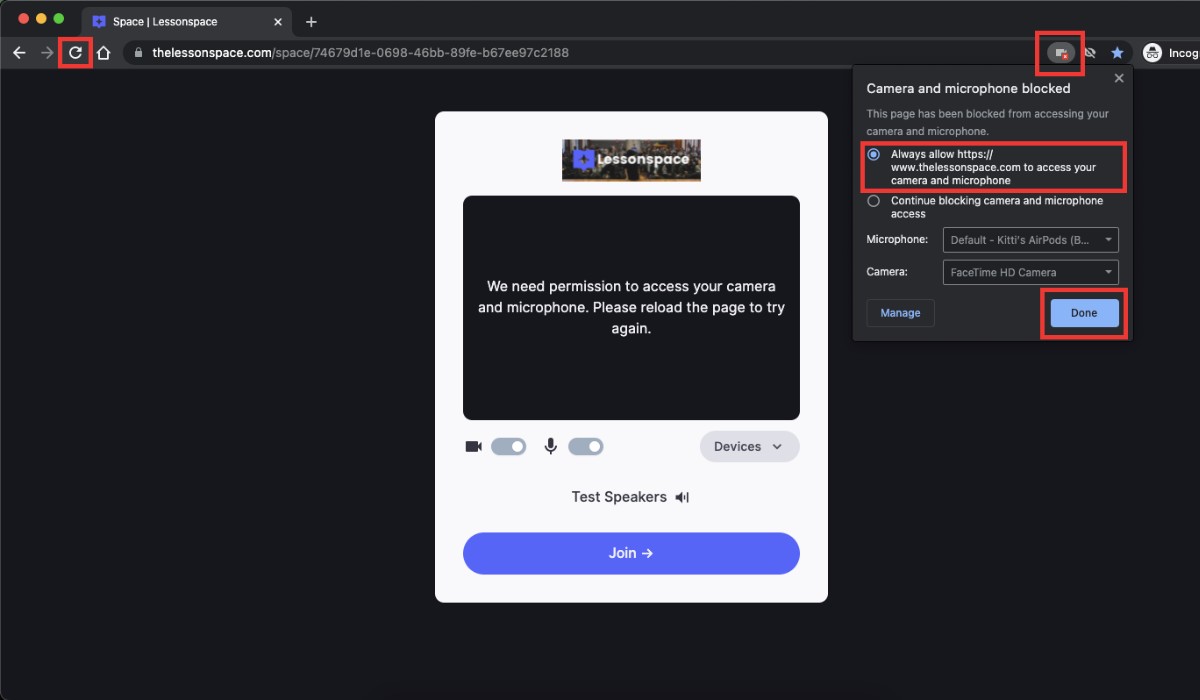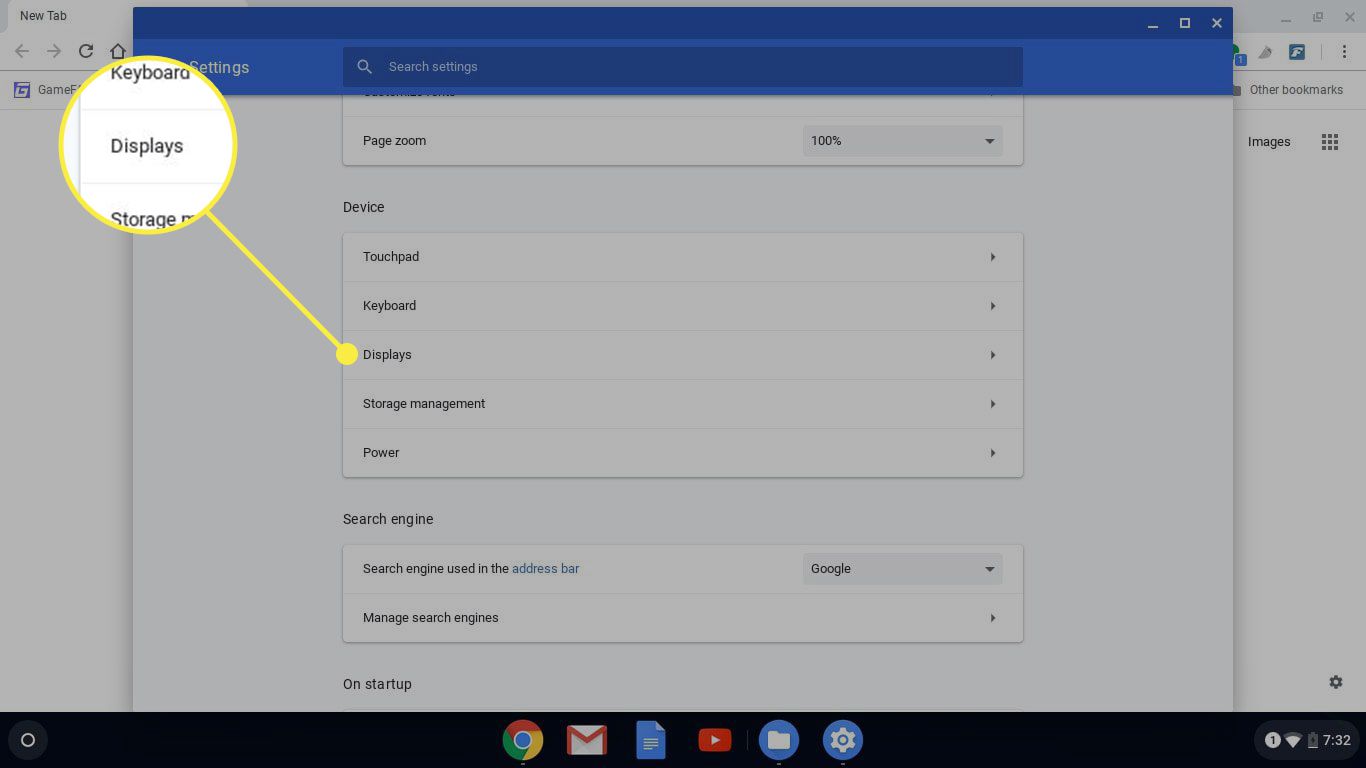Introduction
When it comes to web browsing, Google Chrome stands out as one of the most popular and versatile browsers available. Its user-friendly interface and extensive range of extensions make it a top choice for many individuals and businesses. One of the key features that users often seek is the ability to share their screen during online meetings, presentations, or collaborative work sessions. However, to utilize this feature, it's essential to grant Chrome permission to share the screen.
In this article, we will guide you through the process of granting Chrome the necessary permissions to share your screen seamlessly. Whether you're using Chrome for work, education, or personal purposes, understanding how to enable screen sharing can significantly enhance your online interactions.
By following the step-by-step instructions provided, you'll gain a clear understanding of how to navigate Chrome's settings and grant the required permissions. This knowledge will empower you to make the most of Chrome's screen sharing capabilities, enabling you to engage in productive and interactive online activities with ease.
So, if you've ever found yourself wondering how to give Chrome permission to share your screen, you're in the right place. Let's embark on this journey together and unlock the full potential of screen sharing in Chrome.
Step 1: Open Chrome Settings
To begin the process of granting Chrome permission to share your screen, you'll need to access the browser's settings. This initial step sets the stage for configuring the necessary permissions and lays the foundation for seamless screen sharing in Chrome.
-
Launch Google Chrome on your computer or laptop. Upon opening the browser, you'll notice three vertical dots located in the top-right corner of the window. These dots represent the Chrome menu.
-
Click on the Chrome menu to reveal a dropdown list of options. This menu serves as the gateway to various settings and features within the browser.
-
From the dropdown list, navigate to the "Settings" option, which is typically located towards the bottom. Clicking on "Settings" will redirect you to a new tab within the Chrome browser, dedicated to customizing and managing your browsing experience.
-
Alternatively, you can directly access the settings tab by typing "chrome://settings/" in the address bar and pressing "Enter." This shortcut provides quick and direct access to the Chrome settings, bypassing the need to navigate through the menu.
Upon reaching the settings tab, you've successfully completed the first crucial step in the process of granting Chrome permission to share your screen. This foundational step sets the stage for the subsequent actions required to enable screen sharing within the browser.
By familiarizing yourself with the location and accessibility of Chrome's settings, you've taken the initial stride towards harnessing the full potential of screen sharing capabilities. With the settings tab now open, you're poised to delve deeper into the intricacies of Chrome's permissions and configurations, paving the way for a seamless screen sharing experience.
As you proceed to the next steps, remember that understanding how to navigate Chrome's settings is fundamental to unlocking its diverse functionalities. With this knowledge in hand, you're well-equipped to embark on the journey towards enabling screen sharing in Chrome and enhancing your online interactions.
Step 2: Click on Site Settings
After successfully accessing the Chrome settings, the next pivotal step in granting Chrome permission to share your screen involves navigating to the "Site Settings" section. This crucial phase allows you to delve into the granular controls governing website permissions, including the pivotal screen sharing feature.
Upon reaching the settings tab, you'll notice a range of options on the left-hand side of the screen. Among these options, "Site Settings" holds the key to managing permissions for individual websites, encompassing a spectrum of functionalities such as camera access, microphone usage, and screen sharing capabilities.
To proceed, locate and click on the "Site Settings" option within the settings tab. This action directs you to a comprehensive dashboard where you can fine-tune and customize the permissions granted to various websites visited through the Chrome browser.
Upon entering the "Site Settings" section, you'll encounter a wealth of controls and configurations, each tailored to enhance your browsing experience while maintaining a secure and personalized environment. The ability to manage site-specific permissions empowers you to exercise precise control over how websites interact with your device, ensuring a tailored and secure browsing experience.
Within the "Site Settings" interface, you'll find a dedicated section for managing permissions related to camera, microphone, and screen sharing. This section serves as the focal point for configuring the specific permissions required to enable seamless screen sharing within Chrome.
By clicking on the "Screen Sharing" option within the "Site Settings," you gain access to a range of controls and toggles that govern the behavior of screen sharing permissions across different websites. This level of granularity allows you to tailor the screen sharing experience to your specific needs, ensuring a seamless and secure interaction when sharing your screen during online meetings, presentations, or collaborative work sessions.
As you navigate through the "Site Settings" section, take note of the intuitive layout and user-friendly controls designed to streamline the process of managing website permissions. The ability to fine-tune screen sharing permissions within this interface underscores Chrome's commitment to empowering users with granular control over their browsing experience.
With the "Site Settings" section now at your fingertips, you're poised to delve deeper into the intricacies of screen sharing permissions, setting the stage for the subsequent steps required to enable seamless screen sharing within Chrome. This pivotal phase equips you with the tools and insights needed to navigate the complexities of website permissions, ultimately enhancing your online interactions and productivity.
As you progress through the journey of granting Chrome permission to share your screen, remember that the "Site Settings" section serves as a gateway to a myriad of controls and configurations, each aimed at enriching your browsing experience. With this understanding in mind, you're well-prepared to embark on the next steps and unravel the full potential of screen sharing in Chrome.
Step 3: Find and Select Screen Sharing
Upon entering the "Site Settings" section within the Chrome settings, the next critical phase in granting Chrome permission to share your screen involves locating and selecting the "Screen Sharing" option. This pivotal step allows you to pinpoint the specific controls and configurations governing the screen sharing permissions, paving the way for a seamless and tailored screen sharing experience.
As you navigate through the "Site Settings" interface, you'll notice a range of permissions and controls tailored to enhance your browsing experience. Among these, the "Screen Sharing" option holds the key to configuring the precise permissions required for seamless screen sharing within Chrome.
To find and select the "Screen Sharing" option, you'll first need to scroll through the list of permissions within the "Site Settings" interface. This intuitive layout ensures that all permissions, including screen sharing, are easily accessible and configurable to align with your specific preferences and requirements.
Upon locating the "Screen Sharing" option, click on it to reveal a range of controls and toggles dedicated to managing screen sharing permissions across different websites. This granular level of control empowers you to tailor the screen sharing experience to your exact specifications, ensuring a secure and seamless interaction when sharing your screen during online meetings, presentations, or collaborative work sessions.
Within the "Screen Sharing" interface, you'll encounter a series of options designed to provide you with precise control over how websites can utilize the screen sharing feature. These options may include toggles to enable or disable screen sharing, as well as the ability to manage exceptions for specific websites where you wish to customize the screen sharing permissions.
By selecting the "Screen Sharing" option and navigating through its intuitive controls, you gain the ability to fine-tune the screen sharing permissions, aligning them with your unique preferences and security considerations. This level of customization ensures that your screen sharing experience remains tailored to your specific needs, fostering a productive and secure environment for online interactions.
As you proceed through the process of finding and selecting the "Screen Sharing" option, take note of the user-friendly layout and intuitive controls designed to streamline the management of screen sharing permissions. Chrome's commitment to empowering users with granular control over their browsing experience is evident within this interface, underscoring the browser's dedication to providing a secure and personalized environment for online activities.
With the "Screen Sharing" option now at your fingertips, you're well-equipped to delve deeper into the intricacies of screen sharing permissions, setting the stage for the subsequent steps required to enable seamless screen sharing within Chrome. This pivotal phase equips you with the tools and insights needed to navigate the complexities of website permissions, ultimately enhancing your online interactions and productivity.
As you progress through the journey of granting Chrome permission to share your screen, remember that the "Screen Sharing" option serves as a gateway to a myriad of controls and configurations, each aimed at enriching your browsing experience. With this understanding in mind, you're well-prepared to embark on the next steps and unravel the full potential of screen sharing in Chrome.
Step 4: Allow Screen Sharing
After navigating to the "Screen Sharing" section within the "Site Settings" interface, the pivotal phase of granting Chrome permission to share your screen involves the crucial action of allowing screen sharing. This fundamental step empowers you to enable seamless screen sharing capabilities within Chrome, setting the stage for productive and interactive online interactions.
Upon accessing the "Screen Sharing" interface, you'll encounter a range of controls and toggles designed to provide precise management of screen sharing permissions across different websites. The primary action within this interface revolves around allowing screen sharing, thereby granting websites the necessary permissions to utilize this feature during your online activities.
To allow screen sharing, you'll typically encounter a toggle or checkbox within the "Screen Sharing" interface. By activating this toggle or checking the designated checkbox, you effectively grant websites the permission to initiate screen sharing sessions when required. This simple yet pivotal action ensures that you're in control of when and how screen sharing is utilized, fostering a secure and tailored online experience.
By allowing screen sharing, you empower websites to engage in seamless screen sharing activities, facilitating collaborative work sessions, online presentations, and virtual meetings. This capability enhances your ability to interact and collaborate effectively within the online environment, leveraging the power of screen sharing to convey ideas, demonstrate concepts, and engage in productive discussions.
Furthermore, the ability to allow screen sharing underscores Chrome's commitment to providing users with granular control over their browsing experience. This level of customization ensures that your online interactions remain secure and tailored to your specific preferences, fostering a productive and engaging environment for collaborative endeavors.
As you navigate through the process of allowing screen sharing, take note of the intuitive layout and user-friendly controls within the "Screen Sharing" interface. Chrome's dedication to empowering users with precise control over their screen sharing permissions is evident within this interface, highlighting the browser's commitment to providing a secure and personalized environment for online activities.
With screen sharing now allowed, you've successfully completed the pivotal phase of granting Chrome permission to share your screen. This foundational action paves the way for seamless and productive online interactions, enabling you to harness the full potential of screen sharing within Chrome. By allowing screen sharing, you've positioned yourself to engage in collaborative endeavors, virtual presentations, and interactive discussions with confidence and ease, leveraging the power of Chrome's screen sharing capabilities to enrich your online experiences.
Conclusion
In conclusion, the process of granting Chrome permission to share your screen encompasses a series of intuitive and pivotal steps within the browser's settings. By navigating through the settings tab, accessing the "Site Settings" section, and fine-tuning the screen sharing permissions, you've gained a comprehensive understanding of how to enable seamless screen sharing capabilities within Chrome.
The ability to grant Chrome permission to share your screen empowers you to engage in productive and interactive online activities, ranging from collaborative work sessions and virtual meetings to educational presentations and remote demonstrations. By allowing screen sharing and customizing the associated permissions, you've positioned yourself to leverage the full potential of Chrome's screen sharing feature, fostering a secure and tailored online environment for your interactions.
As you journey through the process of granting Chrome permission to share your screen, it's essential to recognize the browser's commitment to providing users with granular control over their browsing experience. The intuitive layout and user-friendly controls within the "Site Settings" interface underscore Chrome's dedication to empowering users with precise management of website permissions, ensuring a secure and personalized browsing environment.
By following the step-by-step instructions outlined in this guide, you've not only gained the technical know-how to enable screen sharing in Chrome but also acquired a deeper appreciation for the browser's commitment to user empowerment and security. This knowledge equips you to navigate the complexities of website permissions with confidence, enabling you to tailor your online interactions to align with your specific preferences and requirements.
Ultimately, the process of granting Chrome permission to share your screen transcends technical configurations; it embodies the empowerment of users to engage in meaningful and productive online interactions. Whether you're collaborating with colleagues, delivering virtual presentations, or participating in remote educational activities, the ability to seamlessly share your screen within Chrome enhances your capacity to communicate, collaborate, and engage effectively within the digital landscape.
With Chrome's screen sharing capabilities at your fingertips, you're poised to embark on a journey of enriched online interactions, leveraging the power of screen sharing to convey ideas, demonstrate concepts, and engage in productive discussions. By harnessing the full potential of screen sharing within Chrome, you're well-equipped to navigate the evolving landscape of virtual collaboration and communication, fostering a seamless and engaging online experience.

























